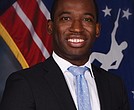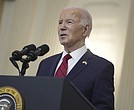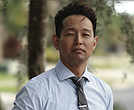What’s in a name?
Efforts to rename the Lee Bridge rise again, bounded by slave-holding ties
Jeremy M. Lazarus | 10/20/2022, 6 p.m.
Instead of a slavery-defending general, a key bridge over the James River could soon bear the name of a plantation where enslaved people labored.
Fifth District City Councilwoman Stephanie A. Lynch has spearheaded the revived effort to rename the Robert E. Lee Memorial Bridge after nearly 90 years to wipe away its association with the leader of the Confederate military that fought to separate from the Union and create a country where slavery was perpetual.
Her proposal, which cleared a council committee Tuesday, would change the name to Belvidere Bridge. Second District Katherine Jordan has signed on as a supporter of the ordinance, which the full council is expected to approve at the Monday, Nov. 14, meeting.
A council initiative to rename the bridge began two years ago, but languished since June 2020. Frustrated, Ms. Lynch took up the cause this summer and introduced legislation in September.
She had plenty of options, such as influential Richmonders past and present whose contributions would have been deserving of such high profile recognition. Or she could have chosen a generic name, such as The Bridge.
Ms. Lynch said she felt the name was appropriate. “I often hear people refer to it as the Belvidere Bridge,” she said since the span connects on North Side with the section of U.S. 1 called Belvidere Street. Plus, she said the name is Italian and translates to “beautiful view.”
However, the name she chose turns out to be an English misspelling of the Italian word “belvedere,” which does translate to panoramic view.
And her choice also ignores the Richmond history of the name, which refers to the plantation home and operation of William Byrd III, the son of Richmond’s founder, William Byrd II.
William Byrd III had the home built in 1758 in what is now Oregon Hill and apparently named it Belvidere in honor of the view of the river that it commanded. The large, simply designed home stood just south of Pine and China streets, according to Charles Pool, a resident of Oregon Hill, who has researched the home.
What is known is that enslaved people were part and parcel of the operation of the home that William Byrd III occupied with his second wife and the eventual 10 children she bore him. And that continued to be the case after he committed suicide in 1777 as he faced huge debts he could not pay.







